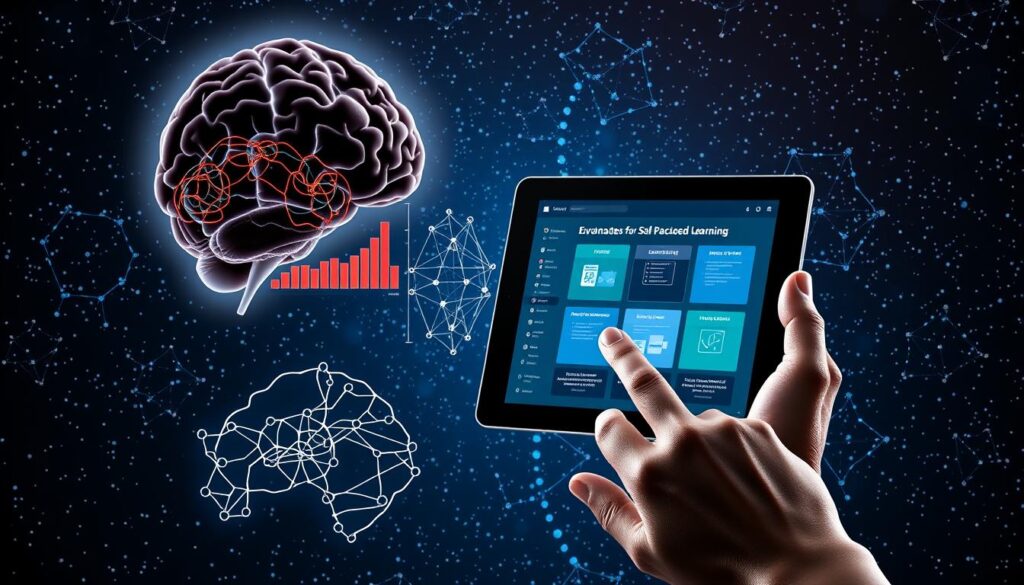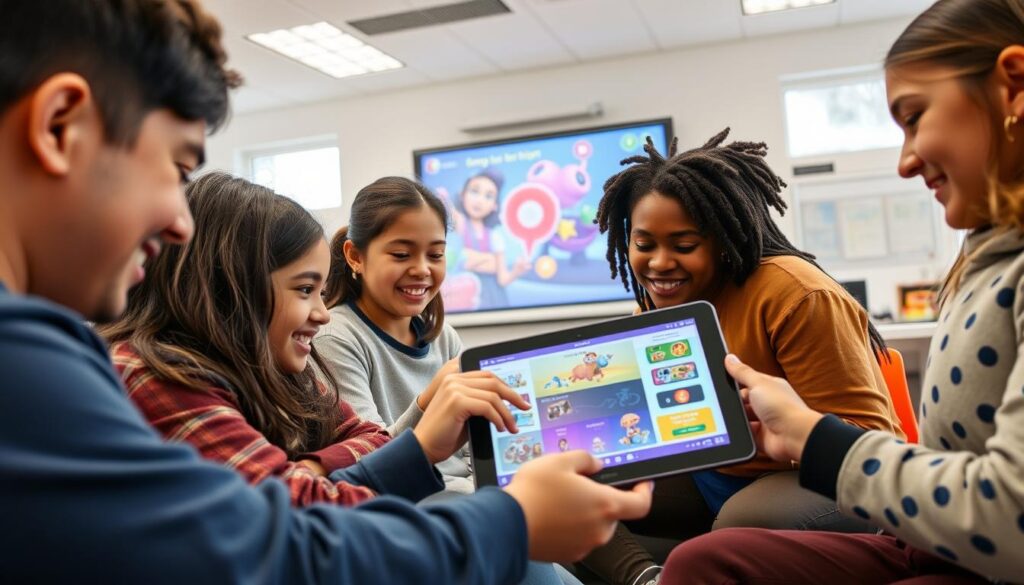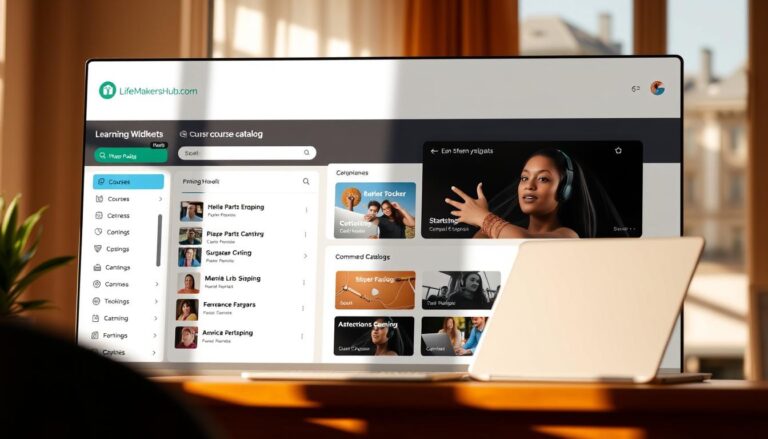Discover Powerful Self-Paced Learning Methods
In today’s fast-paced world, taking control of your education has never been more important. Self-paced methods allow you to learn on your own terms, fitting education into your busy schedule. Whether you’re balancing work, family, or other commitments, this approach offers the flexibility to study anytime, anywhere.
With self-paced programs, you decide how much time to dedicate to each topic. This is especially helpful for those with unique needs, such as disabilities or personal responsibilities. Studies show that this method improves retention and engagement, making it a practical choice for professionals and students alike1.
Mobile platforms like Duolingo and SC Training make it easy to access courses on the go. A well-structured course ensures you stay engaged and retain information effectively. By the end of this article, you’ll have actionable tips to make the most of your self-paced journey.
Key Takeaways
- Self-paced methods offer flexibility to learn anytime, anywhere.
- Learners control their schedule and study pace.
- Mobile platforms make learning accessible on the go.
- Well-designed courses improve engagement and retention.
- Self-paced learning is cost-effective for organizations.
Understanding Self-Paced Learning Fundamentals
Self-paced education is transforming how individuals approach personal and professional growth. This method allows the learner to take control of their study time, creating a personalized path to success. Whether in education or corporate training, it’s a powerful way to balance life and learning.
Definition and Scope
Self-paced learning is a flexible approach where the learner decides when and how to engage with the material. It’s widely used in online courses, corporate training, and even language apps like Duolingo. This method is particularly effective for those who need to fit education into a busy schedule.
Research shows that self-directed learning involves four key stages: readiness to learn, setting goals, engaging in the process, and evaluating progress2. This structured way ensures that learners stay on track while maintaining autonomy.
Key Principles and Approaches
The core principles of self-paced learning include flexibility, autonomy, and adaptability. These elements empower the learner to take charge of their education. For example, a well-designed course allows individuals to access content at their own pace, ensuring better retention and engagement.
Building a proper schedule is crucial. It helps learners avoid the rigidity of traditional systems while staying organized. Academic studies highlight the importance of metacognitive monitoring, where learners regularly assess their progress and adjust their approach2.
| Principle | Description |
|---|---|
| Flexibility | Learners choose when and where to study. |
| Autonomy | Individuals control their learning pace and content. |
| Adaptability | Courses adjust to the learner’s needs and progress. |
Understanding these fundamentals is the first step toward implementing successful self-paced methods. By focusing on the learner’s needs, this approach offers a practical way to achieve personal and professional goals.
Advantages and Research Behind Self-Paced Learning

Research shows that giving learners control over their study pace can significantly boost memory retention. This approach allows individuals to focus on challenging material, ensuring better understanding and recall3.
Scientific studies highlight the role of metacognitive strategies in self-directed education. Techniques like discrepancy reduction and regions of proximal learning help learners identify gaps in their knowledge and allocate time effectively4.
Controlled experiments comparing self-paced and fixed-rate study groups reveal clear advantages. Learners who set their own pace demonstrate improved recall and recognition, especially when paired with effective time allocation3.
Scientific Evidence and Memory Performance
One key point is that self-paced methods allow learners to adjust their study time based on difficulty. This flexibility leads to deeper engagement and better long-term retention4.
For example, a study found that participants who controlled their study pace outperformed those in fixed-time groups by 20% in memory tests3. This underscores the importance of autonomy in the learning process.
Another critical factor is the use of metacognitive monitoring. Learners who regularly assess their progress and adjust their approach achieve higher success rates4.
By focusing on difficult items and allocating more time to them, individuals can master complex concepts more effectively. This self self-paced method ensures that no topic is left unaddressed3.
Effective Self-Paced Learning Strategies
Mastering your educational journey starts with the right tools and techniques. By focusing on customization and data-driven methods, you can optimize your progress and achieve your goals efficiently.
Learner Control and Customization
Customizing your self-paced journey ensures success. Learners who control their study time outperform those with fixed schedules5. This flexibility allows you to focus on challenging material, improving retention and understanding.
For example, SC Training’s mobile LMS dynamically adjusts content based on individual progress. This reduces cognitive overload and keeps learners engaged. Breaking down lessons into microlessons also helps maintain focus and improve retention6.
Data-Driven Time Allocation Techniques
Allocating study time based on progress is key. Data-driven tools analyze your performance and suggest optimal study sessions. This ensures you spend more time on difficult topics, leading to better results5.
Here’s how you can apply these techniques:
- Commit to a schedule that fits your routine.
- Set realistic goals to track your progress.
- Use platforms that incorporate real-time data for optimized learning.
| Technique | Benefit |
|---|---|
| Learner Control | Improves retention and engagement. |
| Data-Driven Allocation | Optimizes study time for better results. |
| Microlessons | Enhances focus and reduces cognitive load. |
By combining these strategies, you can create a personalized and efficient learning experience. Take control of your education and achieve your goals with confidence.
Leveraging Mobile Learning and Microlearning Techniques
Mobile technology has revolutionized how we access and absorb information, making education more accessible than ever. With smartphones and tablets, lessons are now available at your fingertips, allowing you to learn anytime, anywhere. This shift has opened doors for busy professionals and students alike, offering flexibility and convenience.
Microlearning takes this a step further by breaking down complex topics into bite-sized lessons. These short, focused modules are designed to fit into your daily routine, making it easier to retain information. Research shows that microlearning modules typically range from 2–10 minutes, catering to limited attention spans and improving knowledge retention7.
Optimizing Content for Multiple Devices
To maximize the result of mobile learning, content must be optimized for various devices. This ensures a seamless experience, whether you’re using a smartphone, tablet, or laptop. Companies like Duolingo and SC Training have mastered this approach, delivering engaging and interactive lessons that adapt to your device.
Mobile learning also facilitates just-in-time education. For example, 68% of employees prefer mobile learning, as it allows them to integrate lessons into their daily tasks, boosting productivity by 25%8. This approach is particularly effective for busy professionals who need to balance work and education.
Here’s how mobile learning and microlearning benefit the modern person:
- Expands access to education on various devices.
- Breaks down extensive content into digestible lessons.
- Improves engagement through interactive elements like quizzes and polls7.
- Provides immediate feedback, enhancing the learning process.
| Benefit | Description |
|---|---|
| Flexibility | Learn anytime, anywhere, on any device. |
| Engagement | Interactive elements keep learners focused. |
| Retention | Short, clear lessons improve knowledge retention. |
| Feedback | Immediate responses help learners track progress. |
By leveraging mobile learning and microlearning techniques, you can create a personalized and efficient educational experience. Whether you’re a student or a professional, these methods ensure that you stay engaged and achieve your goals.
Enhancing Engagement with Gamification

Gamification is reshaping how we approach education and training, making it more interactive and engaging. By integrating game-like elements into material, learners are motivated to participate actively and retain information better. This approach is backed by research, showing significant improvements in engagement and knowledge retention9.
Interactive Elements to Boost Motivation
Gamification uses tools like leaderboards, quizzes, and challenges to create a fun and competitive experience. These elements tap into psychological triggers, such as the release of dopamine, which fosters a sense of accomplishment9. For example, platforms like SC Training use badges and points to reward progress, keeping learners motivated.
Studies show that gamified training increases engagement by 3.5 times compared to traditional methods10. This is because learners feel more in control and enjoy the process. The immediate feedback provided by quizzes also helps them identify gaps and adjust their approach10.
Here’s how gamification enhances the learning experience:
- Leaderboards create healthy competition, encouraging learners to strive for better results.
- Quizzes and challenges break down complex material into manageable parts, improving retention9.
- Reward systems, like badges and points, trigger dopamine release, boosting motivation9.
| Element | Benefit |
|---|---|
| Leaderboards | Encourage competition and progress tracking. |
| Quizzes | Provide immediate feedback and reinforce knowledge. |
| Badges | Reward achievements, boosting motivation. |
Organizations using gamified training report a 50% faster onboarding rate and higher employee satisfaction10. This approach is not only effective but also cost-efficient, making it a popular choice for modern education and corporate training.
Incorporating Learner Feedback and Assessment

Feedback is the cornerstone of any successful educational journey. It helps educators understand learner needs and refine course content to meet those needs effectively. By collecting and analyzing feedback, you can ensure your courses remain relevant, engaging, and impactful11.
Implementing Surveys and Gamified Assessments
Surveys are a powerful tool for gathering information about learner experiences. Platforms like SC Training integrate surveys seamlessly, making it easy to collect valuable insights11. Gamified assessments, on the other hand, turn feedback into an engaging activity. For example, quizzes with rewards can motivate learners to participate actively.
Here’s how these tools benefit the process:
- Surveys provide detailed information on course strengths and weaknesses.
- Gamified assessments make feedback collection fun and interactive.
- Both methods encourage open discussion between learners and educators.
“Feedback is the breakfast of champions. It fuels improvement and drives success.”
Using learner responses, educators can adjust training strategies to better align with their goals. For instance, if surveys reveal that a topic is confusing, additional resources can be added to clarify it11. This continuous improvement loop ensures that courses evolve to meet learner needs.
| Tool | Benefit |
|---|---|
| Surveys | Collect detailed feedback for course refinement. |
| Gamified Assessments | Engage learners while gathering insights. |
| Feedback Loops | Facilitate continuous improvement and discussion. |
Case studies show that incorporating direct business feedback can significantly improve training performance. For example, a company that used learner feedback to redesign its onboarding program saw a 30% increase in employee satisfaction12. This highlights the importance of listening to your audience and adapting accordingly.
By leveraging feedback tools, you can create a dynamic and responsive learning environment. This not only enhances the learner experience but also ensures your courses achieve their intended goals.
Applying Metacognitive and Memory Strategies

Understanding how your mind works can transform the way you approach education. Metacognitive strategies empower you to monitor your progress and adjust your study habits for better results. These techniques are backed by research, showing a 30% improvement in exam performance for students who use them13.
Effective Study Time Allocation
Allocating time wisely is crucial when tackling varied topics. Research shows that students who focus on challenging material and use self-testing methods can boost retention rates by up to 50%13. This approach ensures you spend more time on areas that need improvement, leading to deeper understanding.
Here’s how to optimize your study sessions:
- Break down complex topics into manageable parts.
- Use tools like flashcards or practice tests to monitor your progress.
- Schedule periodic reviews to reinforce your knowledge14.
Monitoring Learning Progress
Regularly assessing your progress is key to success. Studies reveal that only 30% of students evaluate their study strategies throughout the semester, which can hinder performance13. By asking reflective questions, you can identify gaps and adjust your approach effectively.
For example, writing out what you know before studying can increase retention by 20%13. This simple yet powerful technique helps you stay focused and organized. Additionally, engaging in peer discussions can enhance understanding by 65%13.
“The cycle of planning, monitoring, and evaluating is a continuous process for metacognitive learners.”
By incorporating these strategies, you can take control of your education and achieve your goals with confidence. Start today and see the difference metacognitive techniques can make.
Designing Visually Engaging and Bite-Sized Lessons
Visual elements are key to making lessons memorable and engaging. When learners see one clear message paired with graphics or diagrams, they’re more likely to retain the information. This is especially true for bite-sized lessons, which are designed to fit into busy schedules15.
Simplifying Complex Information
Breaking down complex ideas into smaller chunks is a kind of art. It prevents cognitive overload and helps learners focus on the main points. For example, using flowcharts or pictograms can turn a complicated topic into something easy to understand16.
Research shows that lessons between 5 to 15 minutes are the most effective. This is the reason why microlearning modules are so popular. They fit into short breaks or commutes, making learning convenient and efficient15.
Here are some design strategies to simplify information:
- Use visuals like icons or infographics to convey one idea at a time.
- Break lessons into steps or sections for better clarity.
- Incorporate interactive elements like quizzes to reinforce key points16.
By focusing on one clear message per lesson, you ensure learners grasp the main concepts without feeling overwhelmed. This approach not only improves retention but also keeps them motivated to continue their educational journey.
Real-World Applications in Education and Business
Industries across the board are leveraging adaptable training programs to meet modern demands. From compliance to workplace safety, these solutions are transforming how organizations operate. Let’s explore how tailored courses are making a difference in real-world scenarios.
Case Studies and Sector Examples
Take 1st Choice Real Estate, for example. They implemented a flexible training program to upskill their agents in continuing education. This approach not only improved their assessment outcomes but also enhanced their ability to serve customers better17.
Similarly, ForkLift Academy introduced a workplace safety course that allowed employees to learn at their own pace. The program addressed critical skill gaps, reducing accidents by 25%18. These examples highlight the practical benefits of adaptable training solutions.
Here’s how these programs are making an impact:
- Tailored courses improve skill development and retention.
- Flexible structures allow organizations to scale training effectively.
- Enhanced assessment methods ensure measurable results.
By integrating these programs, businesses can address specific needs while keeping customer satisfaction high. For instance, companies that digitized their training saw a 30% increase in employee engagement17.
These real-world applications demonstrate the value of adaptable training. Whether it’s compliance, safety, or professional development, the right program can drive success across industries.
Building Flexible and Scalable Self-Paced Courses
The future of education lies in creating courses that adapt to individual needs and schedules. Gone are the days of rigid classroom structures—today’s learners demand flexibility and scalability. By designing courses that evolve with learners, we can address the lack of engagement often seen in traditional settings.
Crafting an Effective Course Structure
An adaptable course structure is key to meeting diverse learner needs. Start by breaking content into modular units that can be updated or expanded as required. This approach ensures that courses remain relevant and engaging over terms19.
Research shows that 82% of students prefer online learning, which highlights the importance of flexibility19. By incorporating multimedia elements like videos and interactive quizzes, you can create a dynamic learning experience that keeps learners motivated.
Integrating Authoring Tools and Technology
Modern authoring tools like Articulate 360 and iSpring simplify course development. These platforms allow educators to create, update, and scale content efficiently. For example, SC Training’s mobile LMS dynamically adjusts content based on learner progress, ensuring a personalized experience20.
Transitioning from traditional classrooms to self-paced environments requires thoughtful planning. Tools like Kaltura provide analytics to measure engagement and course effectiveness, helping educators refine their approach20.
Here’s how to build scalable courses:
- Use modular designs to allow easy updates and expansions.
- Leverage authoring tools to streamline content creation.
- Incorporate multimedia to enhance engagement and retention.
By addressing the lack of engagement in traditional settings, we can create courses that support lifelong learning. This approach not only benefits learners but also ensures that education remains relevant in a rapidly changing world.
Conclusion
Modern education thrives on flexibility and personalization. By leveraging technology, you can create courses that adapt to individual needs, ensuring better outcomes. Studies show that 70% of learning happens through informal methods, making learner control a critical factor21.
Customized pacing and engaging tools like gamification and feedback loops enhance retention and motivation. For example, organizations that integrate these methods see a 25% improvement in workplace safety21. These findings highlight the importance of a well-planned strategy.
Start transforming your training approach today. Embrace these techniques to create scalable, engaging courses that drive success. Take the first step toward empowering your growth and achieving your goals.
FAQ
What is self-paced learning?
How does self-paced learning improve memory performance?
Can self-paced learning be used in business training?
What role does technology play in self-paced learning?
How can gamification enhance self-paced learning?
What are the benefits of learner feedback in self-paced courses?
How do I create a flexible self-paced course?
What are some real-world examples of self-paced learning?
Source Links
- What is Self Paced Learning? Definition, Benefits and Tips | Digital Learning Institute
- Self-Directed Learning: A Four-Step Process | Centre for Teaching Excellence | University of Waterloo
- Developing Self-Directed Learners – PMC
- On the effectiveness of self-paced learning
- Mastering Knowledge at Your Own Pace: Effective Self-Paced Learning Strategies
- Microlearning: The Complete Guide to Strategy, Examples & More
- Maximizing Mobile Learning: The Key to Just-in-Time and Continuous Learning Success – Brandon Hall Group
- Gamification In Learning: Enhancing Engagement And Retention In 2025
- Gamification for Learning: 7 Strategies for Success – Centrical
- Effective Strategies for Assessment & Feedback
- What is self-assessment? Best tips to promote self-regulation
- Metacognitive Study Strategies – Learning Center
- Fostering Metacognition to Support Student Learning and Performance
- Your Guide To Creating Engaging Self-Paced Learning Courses
- Bite-Sized Learning Guide: Tips, Benefits & Importance
- Driving Self-paced Learning in the Workplace – Featuring 3 Case Studies
- Upskilling & Reskilling: Essential Corporate Education Strategies for Workforce
- Self-Paced Learning: All You Need to Know for 2025 | Mighty Networks
- What is flexible learning + strategies & insights – Kaltura
- Self-Paced Learning Strategies and the Benefits – XpertLearning







